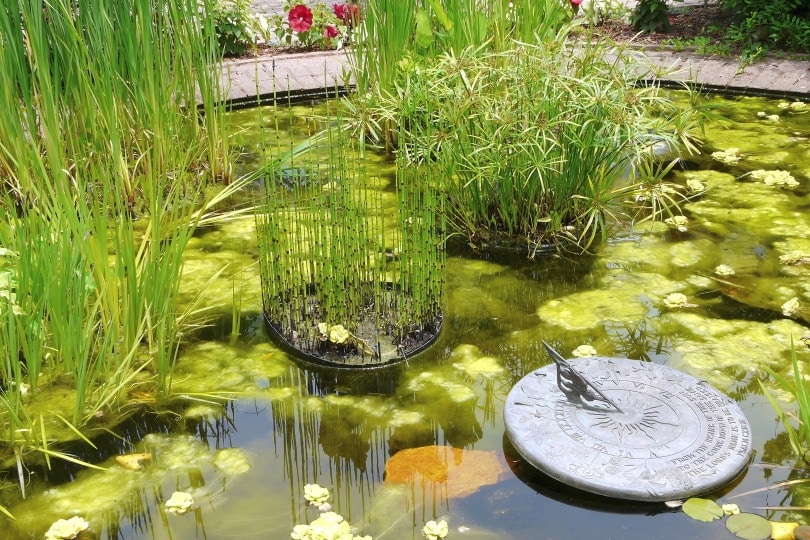Pond weeds are fast-growing and unsightly plants that can quickly over-run both ponds and tanks. This plant is not very attractive and is seen as an invasive plant in many different states. Removing pond weeks can be a difficult task, but several ways can make it easier. Some aquarists warm up to pond weeds and do not mind if a small amount grows around the aquarium. However, keeping pondweed growth under control is the most important part.
Maintenance can be made easy if you follow the guidelines in this article on how to get rid of different types of pond weeds and how you can take control of their rapid growth. This in-depth article will inform you of everything you need to know when it comes to removing these invasive species without harming your fish.

What Are Pond Weeds?
Pond weeds are part of the Potamogetonaceae and are part of the aquatic plant family of pondweed. This is a monocotyledonous flowering plant, and there are roughly 110 different documented species that are dived into six genres. One of the largest genera in the family of pondweeds is Potamogeton, which contains roughly 100 species.
Pond weeds have strong roots and are a common issue in ponds that receive a high amount of sunlight. As the aquarium matures and more nutrients build up within the water, pondweeds accumulate nutrients and sludge, which causes them to grow rapidly. Eutrophication helps this aquatic weed grow alongside artificial light or sunlight.
These plants are emergent weeds that grow along the shoreline and can grow above the surface in an aquarium. Pond weeds are more common in ponds and rarely grow out of control in tanks and smaller bodies of water. If a seed of the pondweed family is introduced into a tank, then the plant will only grow to a certain size and will not typically overgrow in a tank. Some aquarists purposefully plant pond weeks in tanks to make it appear more natural. These plants also have a host of benefits to herbivorous fish and water quality.
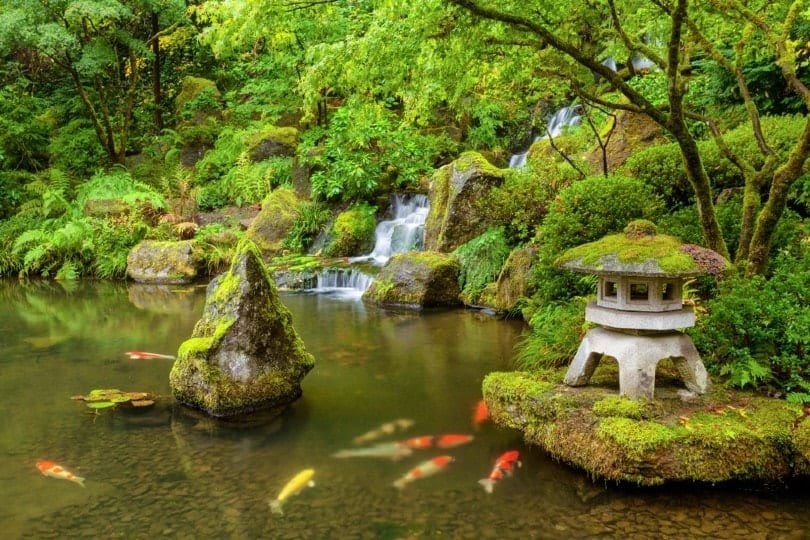

The 7 Ways to Get Rid of Pond Weeds
These methods are safe for many species of fish but are not safe for invertebrates like snails or shrimp. Some of the methods below can be harsh for fish but will not pose a risk if it is used correctly. Keep in mind most of the removal methods will also kill off live plants, except for hand-removal or UV sterilization.
Important: Always wear thick and sterilized safety gloves when handling pondweeds, chemicals, or hydrogen peroxide!
1. Chemicals
You get many different types of chemicals on the aquarium market that kills off invasive plants. Pondweeds are a common target for these chemical brands because these plants are the most undesirable plants growing in bodies of water. Some chemicals are specially formulated for specific types of pondweeds, with algae and duckweed being the most popular. They have dosage amounts at the back, which will tell you how much to add per gallon or liter of water. Do not go over the recommended dosage as it can harm your fish. Always remove invertebrates before adding chemicals. You may want to discontinue a planted tank until treatment is over. Activated carbon and a 90% water change should be done once the pondweed has died off.
2. Hand-removal
This can be labor-intensive, but some species of pondweed can be removed by hand. This typically includes tall growing plants or floating plants. It is best to gather a large amount from the roots and gently pull. A bucket can be used to scoop floating plants in. Gloves should always be worn as some plants are prickly or have a protective coating on them that causes stinging or cuts.
3. UV sterilizer
This is a relatively expensive lighting system that used UV rays to kill off live plants and certain pathogens in the water column. It is most effective against duckweed, Watermeal, or algae. It can be placed above the aquarium and is safe for long-term use.
4. Hydrogen peroxide
A harsher method of invasive pondweed removal is through hydrogen peroxide dips. It degrades rapidly in water and poses little risk to fish if used correctly. However, long-term exposure to overdosing can oxidize the fish. Correct dosage is important. Generally, only 3% of hydrogen peroxide of 1.5 ml should be used per 5 liters of aquarium water. It should be evenly added near the filter so that it can be spread around the tank or pond. To be safe, 1 ml can be used in mild cases per 5 liters of water.
5. Nutrient deprivation
Removing nutrients from the water can help to slowly kill off pondweed. Without enough nutrients, they are unable to grow or thrive. The pond weeds will starve and die even if they receive a lot of light. Nutrient deprivation can be done by daily water changes, understocking a tank, or by using activated carbon in the filter.
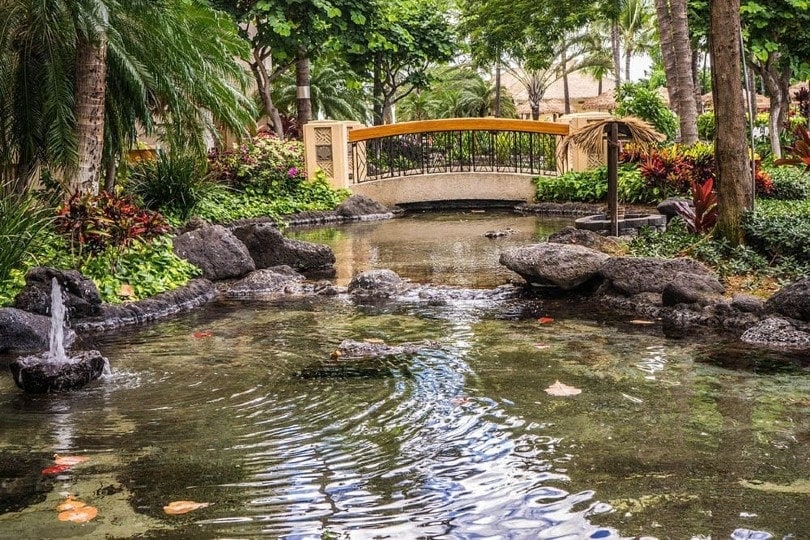
6. Blackout
This is done by turning off all artificial lighting in or around the aquarium. You then place a breathable covering over the tank and increase oxygenation through an air stone. The darkness will kill off live plants and stop them from reproducing. This can be done for a maximum of 3 weeks.
7. Algae eaters
This is only helpful in cases of edible pond weeds like algae and other tasty plants that herbivorous fish or invertebrates love. The most effective algae eaters are catfish, snails, and shrimp. This can be used for maintenance because they will eat the pondweed before it has a chance to grow.

The 15 Types of Pond Weeds & the Most Effective Removal Method
Since there are so many species of pondweed, you may need help when it comes to identifying what is true pondweed and what is not. Each type of pondweed grows differently, and identifying the type of pondweed you have growing in the tank can help you decide on the most effective way to get rid of it.
1. Algae (pond scum or moss)
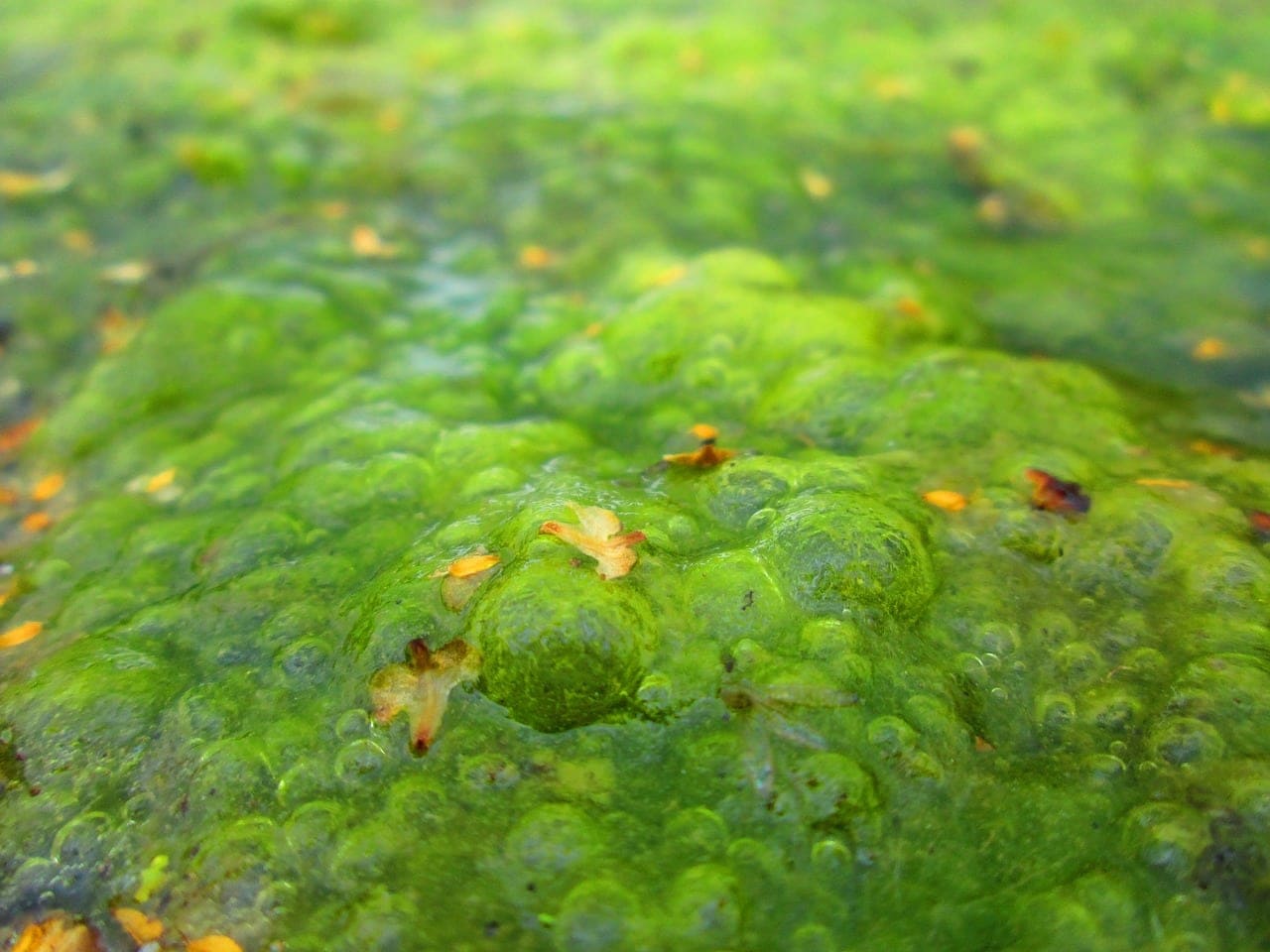
Algae forms a green mat along the surface of a tank’s waterline and sometimes on surfaces within the aquarium. It is fast-growing and requires a moderate amount of light and nutrients to grow. This is the most common form of pondweed and can be difficult to remove.
- UV sterilization, algae eaters, chemicals, hydrogen peroxide, or blackout
2. Duckweed
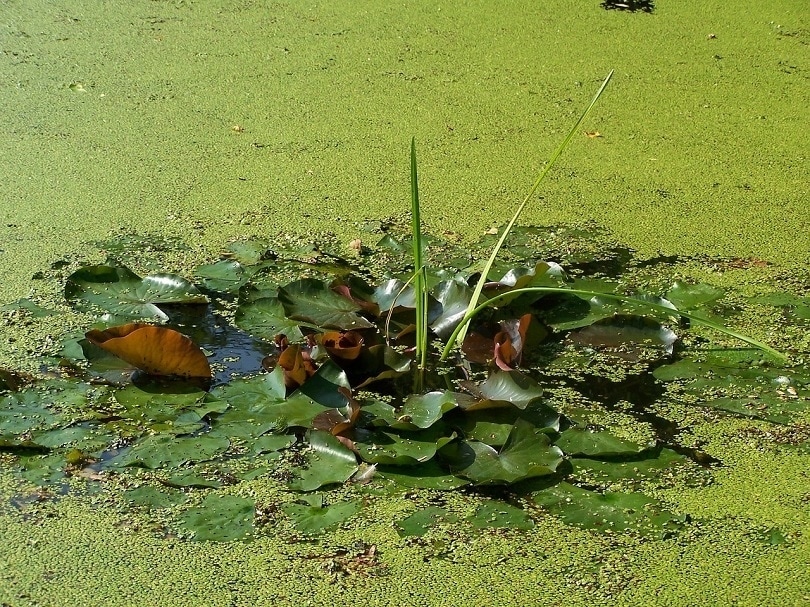
These form small leaves on the surface of the water. They have one taproot and float. Duckweed does not grow below the waterline or on surfaces.
- Blackout and manual hand removal
3. Water Hyacinth
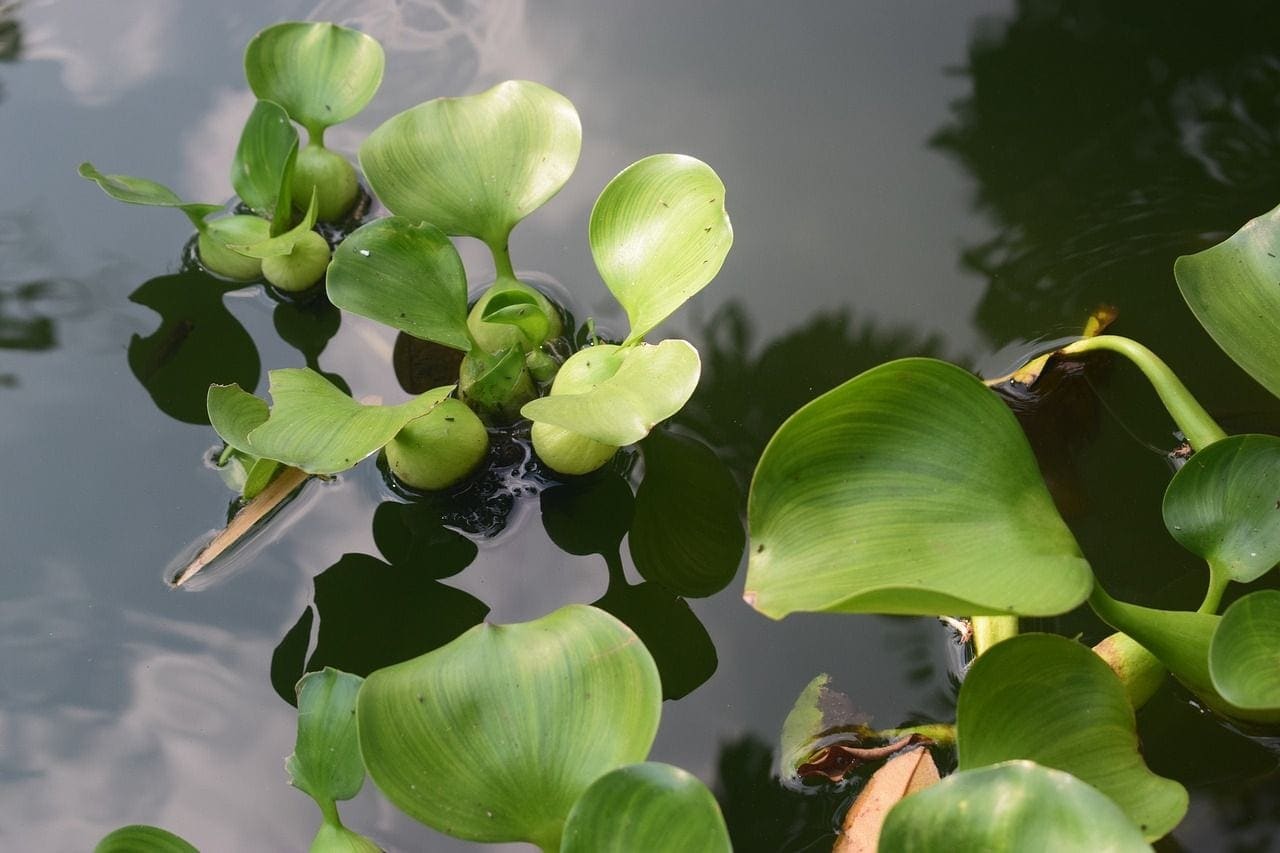
This plant grows to 1 meter in length and can look attractive once it has grown flowers. It is most common in outdoor ponds where it receives a large amount of light.
- Nutrient deprivation, manual hand removal, or hydrogen peroxide
4. Watermeal
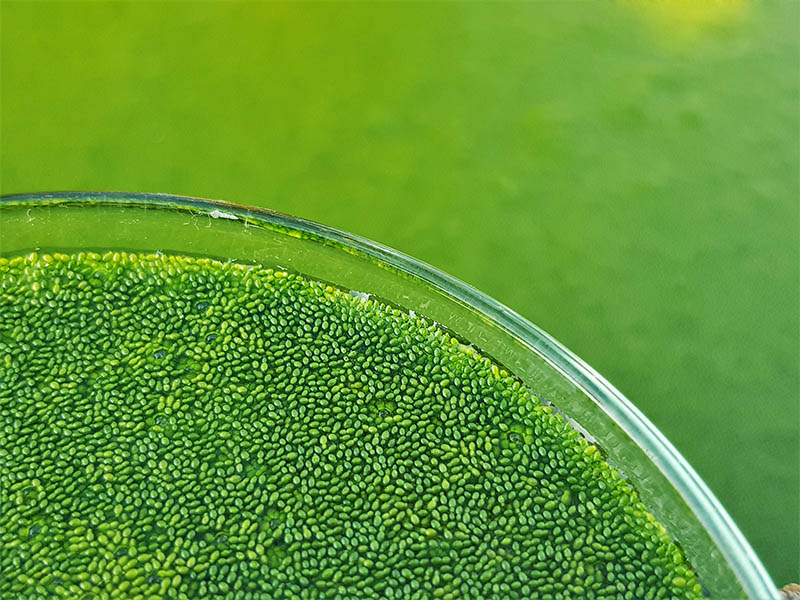
This can replicate duckweed but is smaller and free-floating and can grow tiny flowers when it matures.
- Blackout or UV sterilization
5. Milfoil
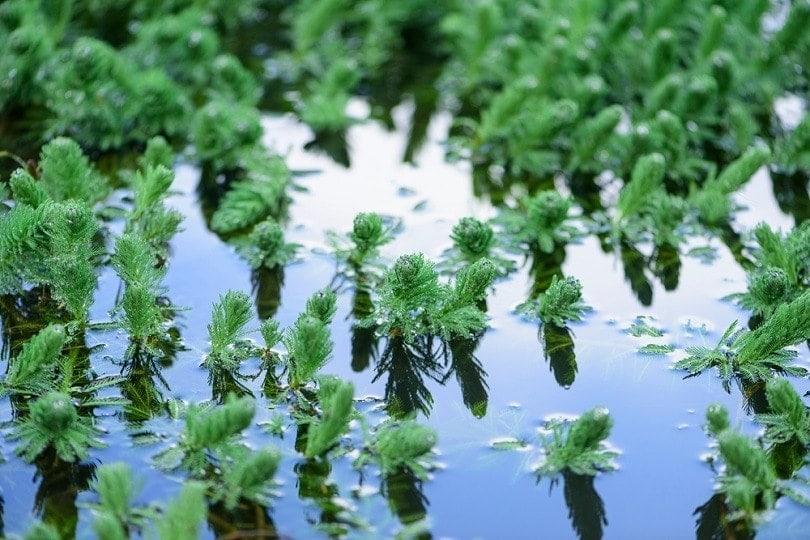
This is an exotic perennial plant that quickly multiplies and overruns ponds. The leaves look like ferns and are fully submerged.
- Manual hand removal, chemicals, hydrogen peroxide, or algae eaters
6. Water lettuce

This weed grows on the surface and is taller than both Watermeal and duckweed. It blocks sunlight and can quickly kill off other live plants that grow below it.
- Blackout, manual hand removal, or chemicals
7. Hydrilla
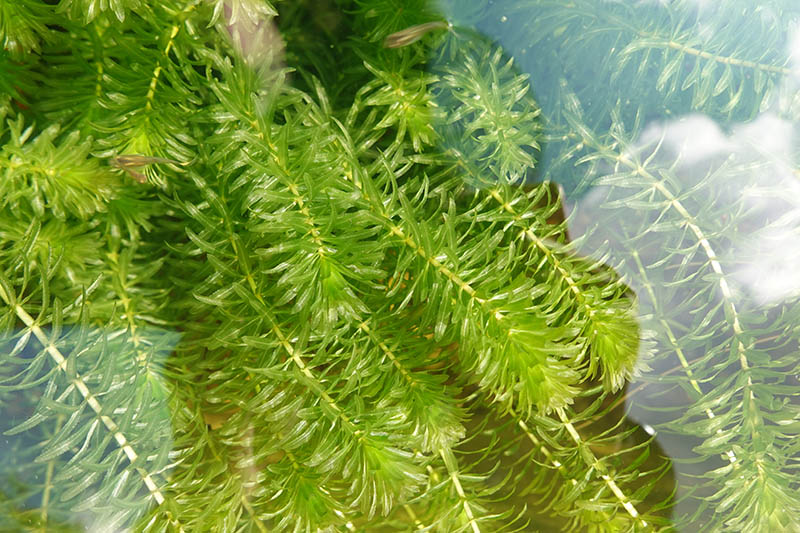
A common plant that grows in high-lit ponds and branches to large heights. The leaves are oppositely arranged at the bottom and have 2 to 8 whorls of leaves covering each stem.
- Manual hand removal, chemicals, hydrogen peroxide, or poor lighting
8. Curly leaf
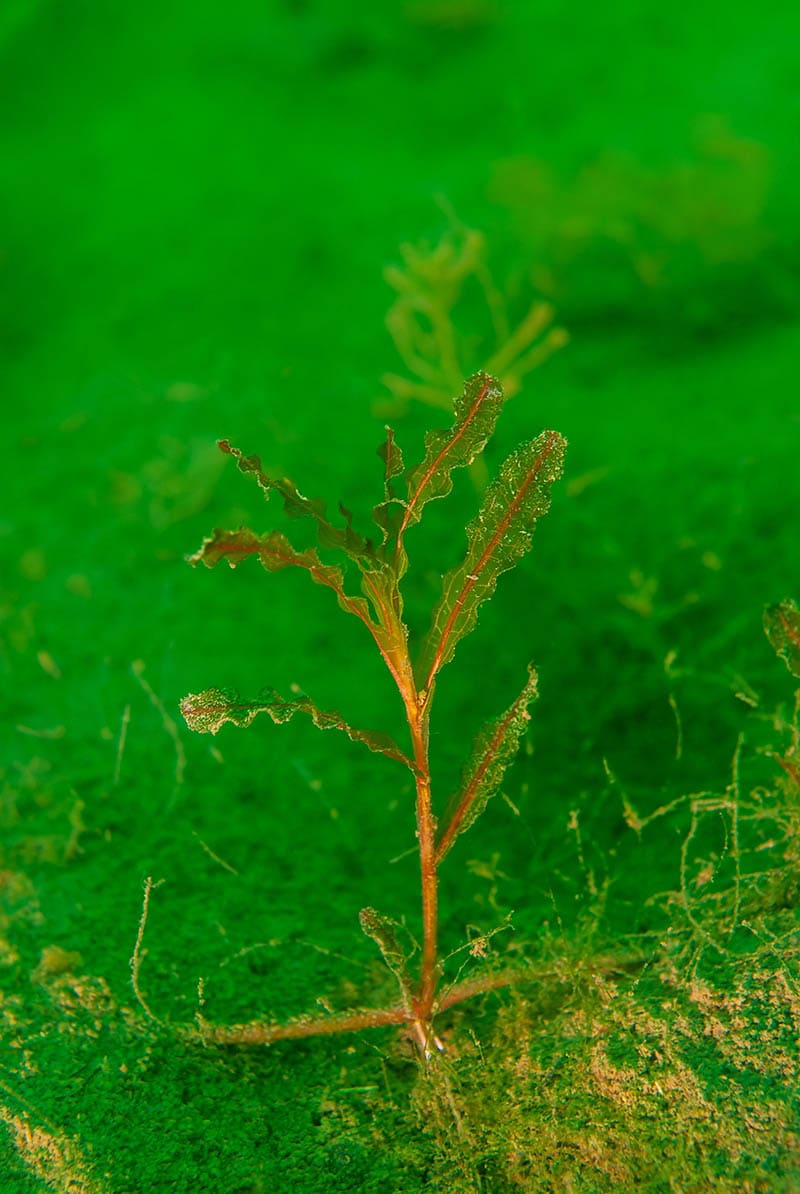
This invasive plant appears as a rust color under the water. It has curly and long leaves from the stem. The plant can look like seaweed and the leaves are wavy or crinkled.
- Manual hand removal, hydrogen peroxide, blackout, or chemicals
9. Coontail

This weed does not have true roots and is anchored by loose debris in an aquarium. It has spiny and forked leaves.
- Manual hand removal or chemicals
10. Naiad
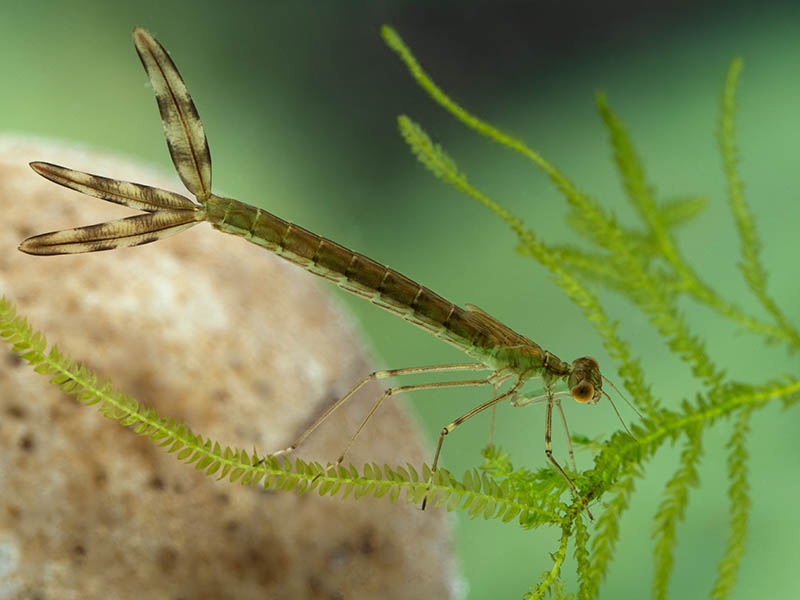
This plant prefers still waters and has a thick stem with bushy leaves at the tops. Sparse leaves grow around the middle of the stem.
- Chemicals, manual hand removal, or hydrogen peroxide
11. Cattail

Cattails have thick roots with long leaves towards the top. The stalks grow tall, and the leaves grow well above the waterline in outdoor ponds. Brown tubes grow from the center called catkins.
- Manual hand removal
12. Sago
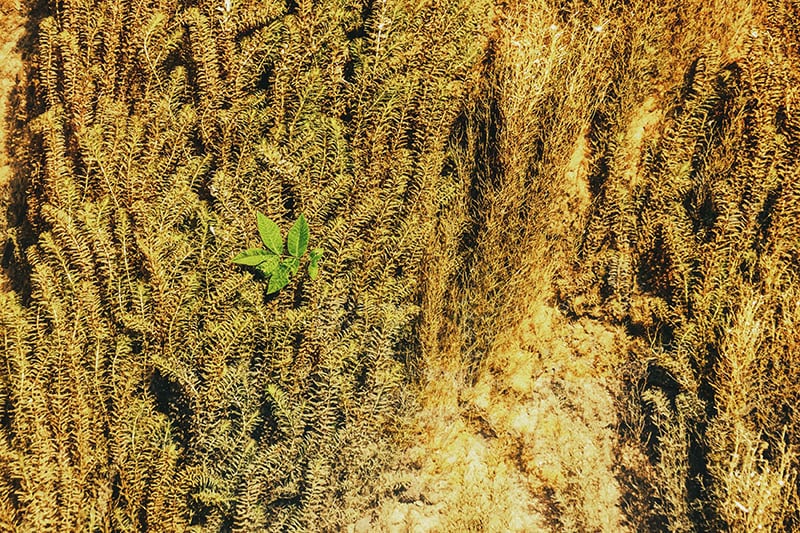
This is a bottom-rooting plant that grows thick and tall leaf blades. It looks like a hard version of aquatic grass.
- Chemicals, hydrogen peroxide, UV sterilizer, Blackout, or nutrient deprivation
13. Water lily
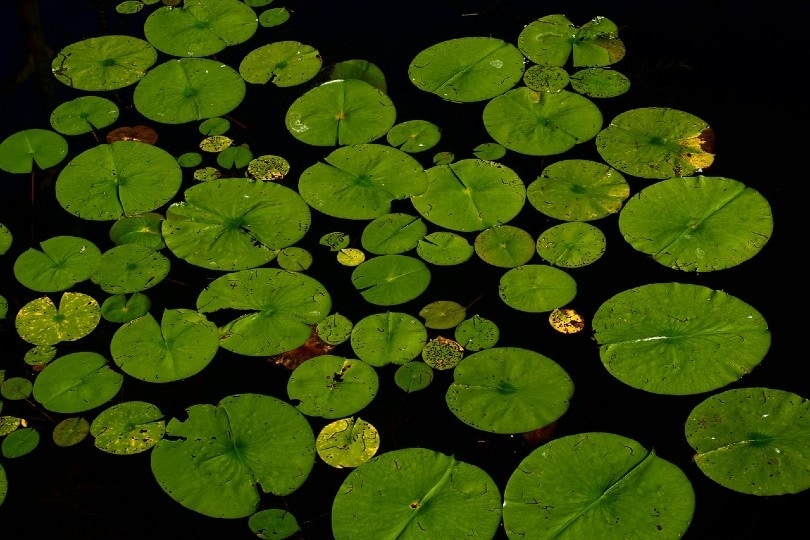
This pondweed has heart-shaped leaves that float on the surface. The leaves are large and mature plants grow bright yellow flowers. The stems are reddish-white and grow in the substrate at the bottom of an aquarium. This is a common issue in both indoor and outdoor ponds.
- Manual hand removal
14. Bulrush
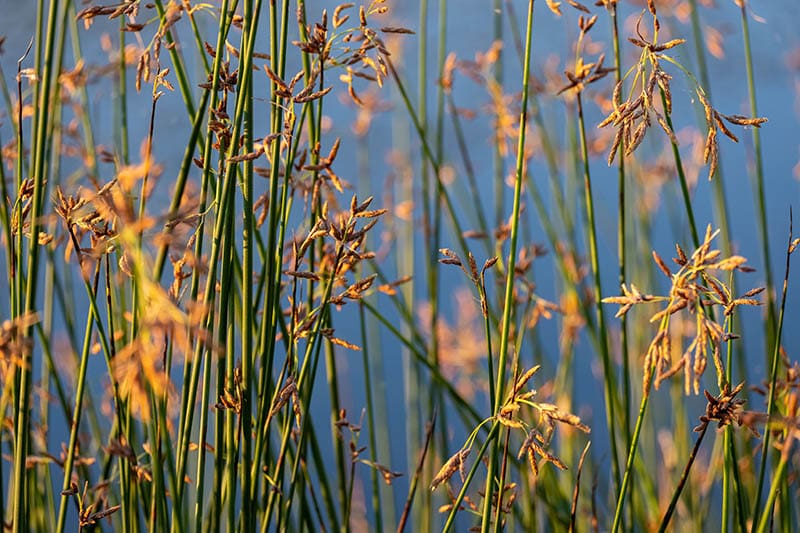
A perennial plant that is hollow or without leaves It grows tall and is a common issue in large ponds.
- Chemicals, nutrient deprivation, or manual hand removal
15. Phragmites

An invasive and exotic species native to North American ponds. It grows tall and lush leaf-blades. It can survive out of water for a brief period when the waterline recedes due to natural causes. It does not grow in tanks.
- Manual hand removal, hydrogen peroxide, nutrient deprivation, or chemicals

Conclusion
Although invasive pondweed is a common problem for many aquarists, it can, fortunately, be controlled and removed through various safe methods. You should always find out what type of pondweed you are dealing with before you go about removing it. Some types of pondweed can only be killed using a certain method.
We hope this article has helped you to find the most effective method to remove invasive pondweed in your aquarium.
Read More: How to Get Rid of Cattails in a Pond
Featured Image Credit: romarti, Shutterstock
